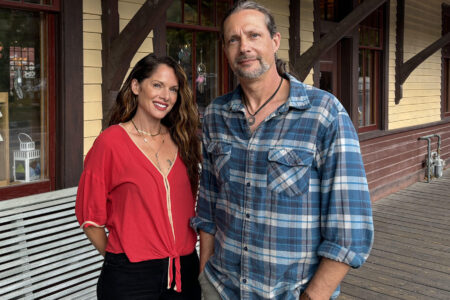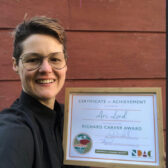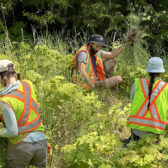Vacancy rate drops to zero in latest Report card on Homelessness
The “Welcome to Nelson” sign could soon be changed to “No vacancy” after a new report revealed there is a zero per cent vacancy rate in the city.
The Nelson Committee on Homelessness (NCOH) released its 10th annual Report card on Homelessness with the latest finding of nearly non-existent rental vacancies, as well as the high percentage of youth experiencing homelessness.
Rental rates keep on climbing in Nelson according to figures from the Canadian Mortgage and Housing Corporation and by locally advertised rental rates, noted Ann Harvey, NCOH community coordinator.
Of the rentals that were being advertised there was an increasing amount of ads that dealt with shared living situations: 49 ads in 2018 compared to 29 one year ago. About 30 of the 49 situations were two- to three-bedroom units renting to roommate groupings, not families.
“And this can often put people in a precarious living situation where one person might have the rental contract while others will come in but don’t really have any status,” in the rental agreement, said Harvey.
The ultimate effect of shared living is that families were left without rental options, she added.
Nearly half of Nelson renters still pay over 30 per cent of their income for housing — the standard mark for affordability — while the B.C. figure is 43 per cent. Nearly one quarter (23 per cent) of Nelsonites under 17 live below the Canadian low income measure, above the provincial rate of 18.5 per cent.
The $36,647 median income in Nelson is below that of the rest of the province ($45,979), creating a ripple effect from the Lower Mainland with people moving to Nelson because it is more affordable, pushing out the Nelsonites to the Slocan Valley, Castlegar and Trail.
“What that means is increased pressure on transportation systems if people have to work and get to services,” Harvey said.
However, rental rates have risen in the valley (for a two-bedroom unit) by 12 per cent, by 17 per cent in Castlegar and the average rent is up 23 per cent in Trail.
One of the main findings of the survey were that many households are living in precarious housing situations and one third of the people surveyed with housing indicated their housing situation was at risk. Conflict or abuse (34 per cent) headed up the at-risk list while tenancy issues — such as unsafe housing or landlord conflicts — comprised 34 per cent of respondents, financial challenges of being unable to pay the high cost of rent was third (24 per cent) and health challenges (23 per cent) was fourth.
Youth homelessness
The really resonated with the Nelson Committee on Homelessness as it was an issue that needed to be further addressed in the city, said Harvey.
Over half (56 per cent) of all ages of respondents indicated they had their first experience of homelessness before 19 years of age, while 54 per cent of people under 25 years indicated they had been in foster care or a group home.
Around one third of those who were homeless were youth, a percentage higher than most other cities undertaking the count, Harvey explained.
“The earlier one can get to look at family stability and issues that put youth at risk, the sooner those things can be addressed and the earlier we can have an impact on homelessness populations,” she said.
Although she could not say what the actual reason for youth homelessness was, 43 per cent of youth indicated the number one factor contributing to their homelessness was a conflict with the parent or guardian.
Around 93 per cent of youth said high rents were the number one barrier to finding stable housing, while 75 per cent said low incomes were a problem and 71 per cent felt there was not enough affordable housing in Nelson.
“If you are in a precarious living situation … because a lot of these kids are the hidden homeless, it’s really hard to maintain education and to maintain work opportunities,” she said.
The survey took place in April with around 700 people being approached for information.
Another brick in the wall
The city has drawn up legislation to deal with retaining structures over 1.2 metres in the city, now requiring people to obtain a building permit to build for larger walls.
TheBuilding Bylaw did not previously require building permits for retaining structures over 1.2 metres, even though the Subdivision and Development Bylaw required owners to submit engineering for retaining structures over 1.2 m.
“The lack made it difficult to monitor when and where these structures are being built and if they are done safely,” read a city staff report to council.
A building permit requirement will provide structured approval and monitoring for these projects.
The permit value will be assessed by the Marshal and Swift system, a current industry standard online estimation and evaluation system. The system is used to calculate building permit fees and will address inconsistencies in construction values declared by permit applicants.
Typically, engineering is required for retaining structures more than 1.2 meters because this is the maximum height for “non-laterally supported foundation walls in the BC Building code.”
Any foundation or retaining wall more than this height requires the services of a structural and possibly a geotechnical engineer.

























